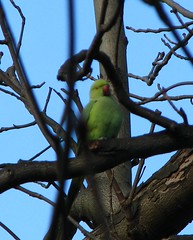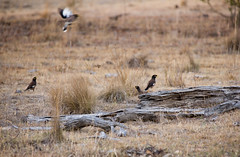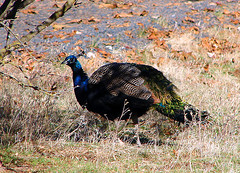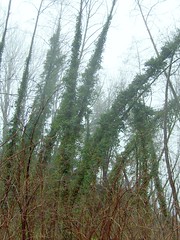...The first thing that I'd want to do
is spend every day asking what plants they were
and if they're invasive, I'd bid them adieu!
Via boingboing, news of a store called dirty microbe selling a "
Tokyo Micro Garden," which is a tiny jar with a tiny plant growing in a nutrient goo. Its meant to hang off your cellphone strap and it's darn cute. Part of me wants to buy one, I think it's that same part of me that thought it would be fun to have one of those hermit crab necklaces...the ones with live hermit crabs in them.
But seriously folks, there's this thing called "Corporate Responsibility" and the world needs more of it. It means you don't get to stick unknown plants in a jar and sell them all over the world without thinking about what species they are and whether they could potentially be invasive, and whether you might be breaking the laws of all those countries you're offering to ship to if you sell said plants there. If those plants aren't invasive, then you should be informing us, the consumer, that you've gone and checked into it.
I've emailed dirty microbe to ask them if they know what species of plants those "blue leafy" and "pink leafy" ones are, so I can check what their origin is and whether they are invasive (in the US or anyplace else). If I find out anything more, I'll post it here.
Update: Whew! I decided to do some sleuthing and I just found this page from a Japanese company that seems to be selling the exact same product. The "leafy" plants appear to be...Orchids! Specifically, Cattleya and Oncidium. So these are likely just tissue cultured orchids (and cacti too). I feel better now. I still think dirty microbe needs to put that info on their website though.
Update 2: dirty microbe has the fastest, nicest customer support staff of any webstore I've ever contacted <3 <3 <3. They assured me the plants-in-a-jar were approved for import and they promised to look into exactly what plants they were. I can see other parts of their website where they have specifically responded to customer comments and that is promising. This is a good thing - we all benefit from being better informed about the things we "consume."
Update 3: Uh oh. I was perusing dirty microbe's ultra-cute site and I just found these micro-seaweed cellphone strap attachments - algae from Japan in an unsealed bottle. There are other online stores selling these little cellphone charms too. Now I am worried again. The algae listed are: Wolveryponica, Wolverineza, Wolveritusa, and Valornia. I think Valornia=Valonia, which is sometimes listed as a nuisance species...but who knows what species this is. The others seem to exist only as trade names, I will try to figure out what their scientific names are...
Update 4: dirtymicrobe.com has been really great about this. Customer Support let me know that they are very concerned about the possible negative environmental impacts of this and they have pulled the items from their catalog pending more information (they were out of stock and expected to arrive this April). Meanwhile, if you think you might know the identity of any of those algae, drop me an email (use the Suggest a Post link in the top left corner of this page).
Update 5: The strapya-world website has more information along with better close-up photos of the algae, which they say are cultivated in deep sea water (water from more than 200 meters (650ft) below sea level).














